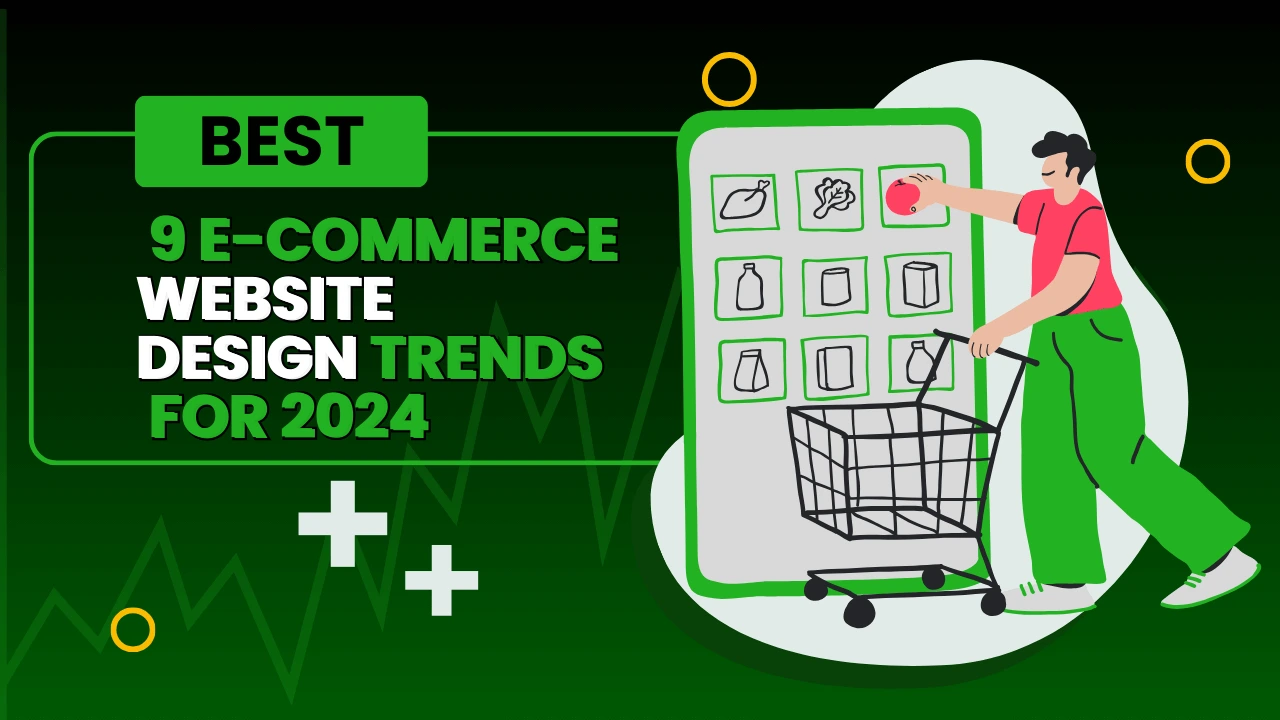
The e-commerce website design landscape is evolving rapidly, and staying ahead of these trends is essential for businesses looking to attract more customers and drive sales. As we head into 2024, design trends are leaning towards enhancing user experience, increasing site functionality, and optimizing conversion rates. Let’s explore the latest website design trends and modern e-commerce design techniques that are setting the stage for a successful year ahead.
1. Minimalist Design – Simplicity That Drives Engagement
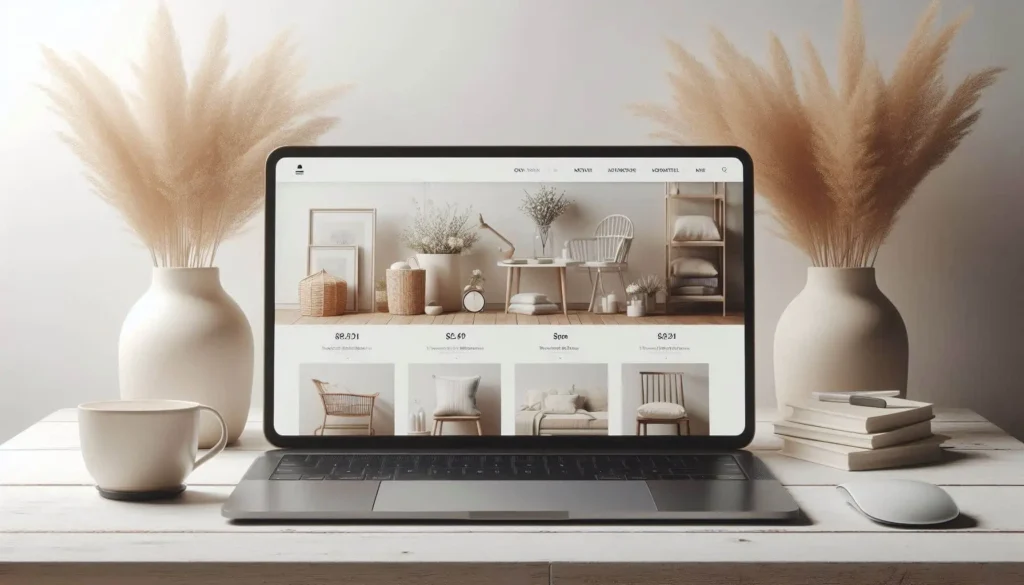
Minimalism in e-commerce website design isn’t just about aesthetics; it’s about creating a user-friendly, clutter-free environment that helps visitors focus on what matters—making a purchase. Stripping away unnecessary elements reduces distractions and leads to a seamless shopping experience. The minimalist approach supports faster loading times, improved mobile responsiveness, and helps users navigate effortlessly through your online store.
Businesses often wonder whether they should go for a minimalist design or a feature-rich layout. While feature-rich sites can offer a lot of functionality, minimalist design focuses on simplicity, enhancing user experience, and conversion rates. Clean layouts make navigation intuitive, encouraging users to complete their purchases more efficiently.
2. AI-Powered Personalization in E-Commerce Websites

Personalized experiences are fast becoming the cornerstone of modern e-commerce design. By using artificial intelligence, businesses can offer personalized product recommendations, tailor-made offers, and dynamic content that adjusts based on user behavior. This AI-driven personalization directly impacts conversions by showing customers the products they are most likely to purchase.
For instance, when users see content and products that match their browsing history, they feel more connected to the site. The ability to customize the shopping experience for every visitor leads to higher engagement and a significant increase in sales.
3. Dark Mode: Elevating User Experience

Dark mode has rapidly gained popularity as users find it easier on the eyes, especially during late-night browsing sessions. It not only adds a sleek and modern e-commerce design aesthetic but also improves readability by reducing glare. The dark color palette enhances visual elements, making images and buttons pop.
While it doesn’t work for all brands, e-commerce businesses focusing on tech, luxury, or creative industries can leverage dark mode to create a more immersive and stylish experience for their users.
4. Micro-Interactions for a Seamless Experience

Micro-interactions—small, subtle animations or design elements—are becoming a key trend in modern e-commerce design. Whether it’s a button changing color when hovered over or a notification popping up with a small animation, these micro-interactions improve the user experience by providing real-time feedback.
These design elements can guide users through the shopping process, making the website more interactive and engaging. Micro-interactions can highlight specific products, promotions, or even encourage users to add items to their cart, thereby improving conversion rates.
5. Mobile-First Design: Catering to Mobile Shoppers

With an increasing number of users shopping through their mobile devices, adopting a mobile-first design strategy has become essential for e-commerce website design. A mobile-first approach ensures that the site is fully optimized for smaller screens, providing a seamless experience regardless of the device.
Incorporating responsive design practices ensures that your website adjusts according to the user’s device, leading to fewer drop-offs, higher engagement, and ultimately, more conversions. Prioritizing mobile design also means faster loading times, smoother navigation, and mobile-friendly checkout processes.
6. Bold Typography for Impactful Messaging

Bold typography is emerging as a major trend in e-commerce website design, helping brands communicate their message more clearly and assertively. Large fonts, coupled with minimalistic design, capture the user’s attention immediately, ensuring they don’t miss out on key information or calls to action.
Incorporating unique fonts also allows your brand to stand out, making it memorable while reinforcing brand identity. It’s a simple yet powerful design choice that can impact the overall user experience.
7. Speed Optimization: Faster Websites, Happier Customers
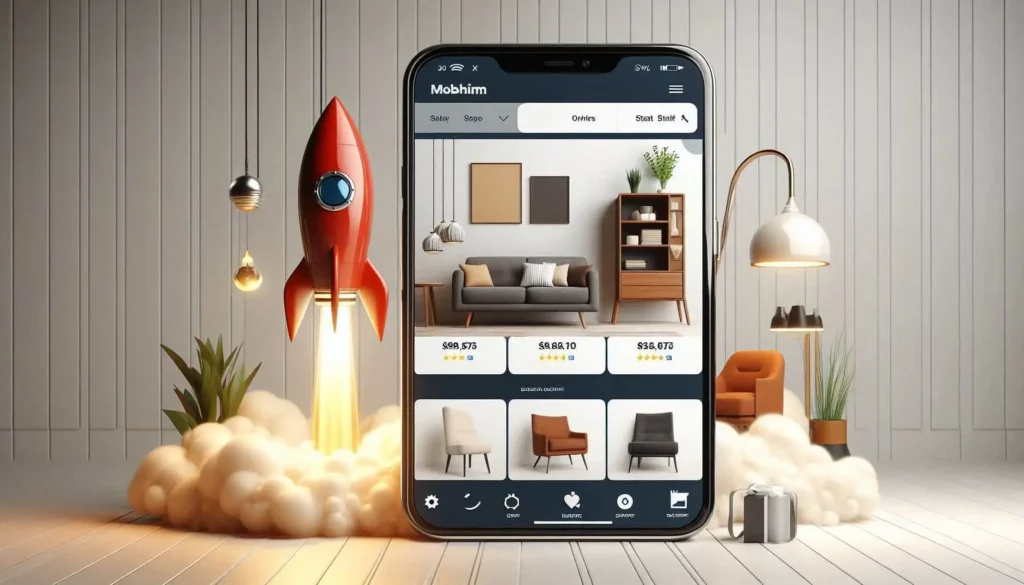
Website speed is a critical factor that influences user behavior. Studies show that even a 1-second delay in page load time can lead to a significant drop in conversion rates. Therefore, modern e-commerce design prioritizes speed optimization through practices like image compression, lazy loading, and minimizing code bloat.
By focusing on performance, you can reduce bounce rates and encourage users to browse more products, ultimately leading to higher sales. Fast websites not only improve user experience but also rank better in search engines.
8. Asymmetrical Layouts: Breaking the Grid

Gone are the days of rigid grid-based layouts. Asymmetrical layouts are gaining traction as a unique way to display content, making websites look more dynamic and creative. This trend allows designers to break free from traditional design constraints, creating more engaging and visually appealing websites.
Asymmetrical layouts add character to your e-commerce store, helping you stand out from competitors. However, they must be used with care to ensure they don’t interfere with the user experience.
9. Accessible Design: Inclusivity is Key
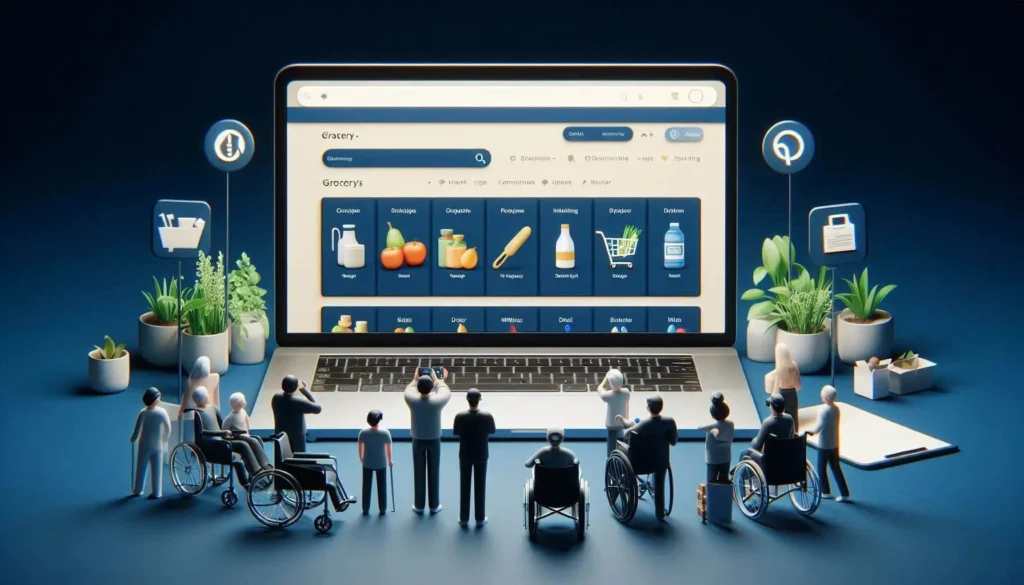
Ensuring that your website is accessible to all users, regardless of their abilities, is not just good practice—it’s essential. Accessibility-driven e-commerce website design incorporates features like keyboard navigation, screen reader compatibility, and high-contrast color schemes to cater to users with disabilities.
By focusing on inclusivity, you can reach a broader audience and build trust with customers who value companies that prioritize accessibility. Plus, accessible websites often see better engagement and higher conversion rates as a result.
________________________________________
How E-Commerce Website Design Trends Impact User Behavior and Conversions
The connection between e-commerce website design and user behavior is strong. Clean, intuitive layouts with strategic design elements can encourage users to spend more time browsing, engage with more products, and ultimately make a purchase. Design trends like minimalism and mobile-first layouts help reduce friction during the shopping journey, leading to smoother navigation and faster checkouts.
Behavior insights, such as understanding how users interact with certain design elements, allow businesses to make informed design decisions that optimize the shopping experience. Whether it’s adding personalization through AI or using micro-interactions to engage users, these trends are not just about aesthetics—they’re about driving conversions.
Call to Action: “Maximize your conversions with a design that speaks to your customers’ needs. Let’s work together to build an e-commerce site that performs.”
________________________________________
Frequently Asked Questions (FAQs)
Q1: What is the most trending e-commerce website design for 2024?
Personalized AI-driven designs and minimalist layouts are gaining popularity, making it easier for users to find products and make purchases with minimal distractions.
Q2: How can design trends improve my e-commerce site’s performance?
Design trends like mobile-first optimization, speed improvements, and AR/VR integration create a better user experience, leading to lower bounce rates and higher conversions.
Q3: Should I focus on minimalist design or feature-rich layouts for my e-commerce store?
A minimalist design offers a clean, user-friendly experience, while feature-rich layouts work well for sites with extensive product offerings. The choice depends on your brand and customer needs.
Q4: Why is mobile-first design essential in 2024?
With the majority of online shopping happening on mobile devices, having a mobile-first website ensures that users have a smooth experience no matter the device they’re using.
Comments (4)
Comments are closed.


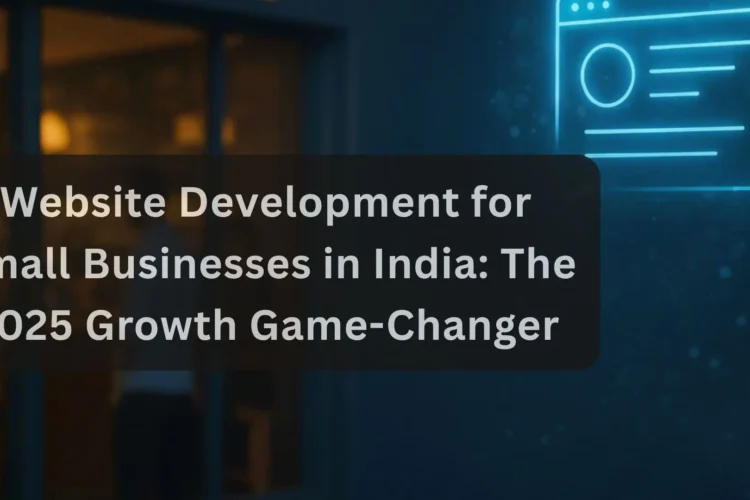


Classic Features Every Website Design For Mobile Needs In 2025 Moonlight Digital Services LLP
December 13, 2024[…] E-Commerce […]
Master Mobile-First Websites: Design, Optimization, And Success Moonlight Digital Services LLP
January 22, 2025[…] E-commerce Businesses: With a majority of shopping happening via mobile, it’s a game-changer for sales and conversions. […]
#1 Retail Website Design In Dubai: A Shopper’s Guide To Success
February 22, 2025[…] keywords: Include phrases like e-commerce design Dubai and online shopping UAE naturally in your […]
How To Build Online Presence UAE: A Step-by-Step Guide For 2025 Success Moonlight Digital Services LLP
May 17, 2025[…] 🛍️ 1. Retail & E-Commerce […]